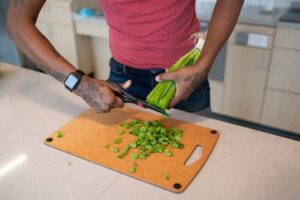
Disaster and environmental disruptions are increasing in frequency and severity due to global climate change. While much is known about food systems and food security in non-disaster times, much less is understood about the impacts of disasters on the local food environment and how people navigate getting food when their homes and communities are severely disrupted.
Currently, the United States Department of Agriculture (USDA) monitor food security – whether households have enough food to eat – they primarily monitor whether people have enough money for food. After a disaster, if your home is damaged and you don’t have a working kitchen to store and prepare food, having enough money is not the only challenge to getting enough food to eat.
This study looks at how we can better measure food insecurity following disasters – when you experience other barriers to food security besides not having enough money. Some examples of barriers we are looking at include physical barriers to food sources such as damaged roads, food availability such as store closures, and appropriate foods that you can eat without extensive kitchen facilities to prepare.
Funder: Tufts University/USDA
Project Team
Lauren Clay (PI); Stephanie Rogus, NMSU; Meredith Niles, University of Vermont; Nadia Koyratty, Post-Doctoral Research Associate, UMBC
Science Advisory Group: Anna Josephson, University of Arizona; Roni Neff & Erin Biehl, Center for a Livable Future, Johns Hopkins University; Rachel Zack, Greater Boston Food Bank; Uriyoan Cólon-Rámos, George Washington University; Azmal Hossan, Colorado State University